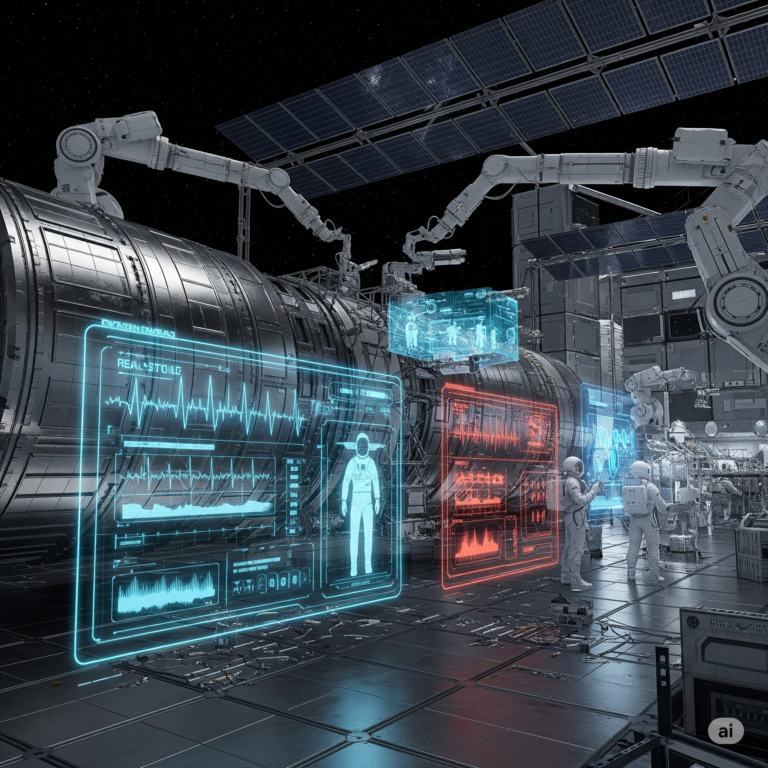Advancements in wearable technology are revolutionizing healthcare, and the latest breakthrough comes in the form of a starfish-inspired wearable device that continuously monitors heart activity. Unlike traditional heart monitors, which often struggle to maintain consistent contact during movement, this innovative device mimics the gripping ability of a starfish, ensuring reliable, real-time data collection without discomfort.
This article explores the development, working mechanism, benefits, and future implications of this groundbreaking wearable technology, shedding light on how it can enhance personalized healthcare and aid in early detection of cardiovascular issues.
Understanding the Need for Advanced Heart Monitoring
Cardiovascular diseases continue to be a major cause of death globally. Consistent and accurate heart activity monitoring is essential for the early detection and management of heart conditions. However, traditional methods like electrocardiograms (ECGs) and Holter monitors come with certain limitations, including:
- Discomfort from rigid electrodes
- Limited mobility during monitoring
- Inconsistent readings due to movement artifacts
These challenges highlight the need for a more flexible, comfortable, and reliable monitoring system, paving the way for bio-inspired wearable technology.
The Science Behind the Starfish-Inspired Wearable Device
Bio-Inspiration: Learning from Nature
Starfish possess a unique gripping mechanism that allows them to maintain strong yet gentle contact with surfaces. Researchers have harnessed this natural ability to design a wearable device that adheres to human skin without causing irritation or slippage, even during movement.
Key Components of the Wearable Device
- Flexible Electrodes: The device incorporates soft, adhesive electrodes that mold to the skin’s surface, ensuring uninterrupted contact.
- Self-Adhesive Material: Inspired by the microstructures found in starfish, the material provides a strong grip without causing discomfort.
- Real-Time Data Transmission: The device wirelessly transmits heart activity data to a connected smartphone or medical system.
- Motion-Resistant Design: Unlike traditional ECG patches, the wearable maintains accuracy even during activities like walking, running, or exercising.
Benefits of the Starfish-Inspired Wearable
1. Continuous and Accurate Monitoring
- Unlike traditional ECG monitors that may lose contact during movement, this wearable provides uninterrupted heart activity tracking.
2. Enhanced Comfort and Usability
- Made from soft, skin-friendly materials, the wearable eliminates the discomfort associated with rigid electrodes.
3. Early Detection of Heart Issues
- Real-time monitoring enables early diagnosis of arrhythmias, palpitations, and other cardiovascular abnormalities.
4. Ideal for Athletes and Patients
- Whether for professional athletes who need performance tracking or patients with heart conditions requiring continuous monitoring, the wearable serves diverse user groups.
5. Integration with Smart Devices
- The wearable syncs seamlessly with smartphones and cloud-based health platforms, allowing users and doctors to analyze data conveniently.
Potential Applications in Personalized Healthcare
1. Remote Patient Monitoring
The integration of this technology into telemedicine can help doctors remotely monitor patients with cardiac conditions, reducing hospital visits while ensuring timely intervention.
2. Preventive Healthcare
By tracking heart activity in real-time, individuals can take preventive measures before a condition worsens, leading to better health outcomes.
3. Sports and Fitness Optimization
Athletes can use the wearable to monitor heart rate variability (HRV), optimize training sessions, and prevent overexertion.
Future Prospects and Challenges
Further Research and Development
While the initial results are promising, further clinical trials and refinements are necessary to validate the device’s efficacy across different demographics.
Scalability and Cost
Mass production and affordability will determine how widely the technology can be adopted. Researchers aim to optimize manufacturing processes to make the device accessible to the general public.
Regulatory Approvals
Healthcare wearables must undergo stringent regulatory assessments to ensure safety and reliability before they can be commercially available.
Conclusion
The starfish-inspired wearable device marks a significant leap forward in heart monitoring technology. By providing a comfortable, motion-resistant, and highly accurate alternative to traditional heart monitors, this innovation has the potential to transform cardiovascular healthcare. As research continues and accessibility improves, this technology may soon become a staple in personalized and preventive medicine, ultimately saving lives through early detection and continuous monitoring.
With the growing demand for smart healthcare solutions, nature-inspired innovations like this wearable device reaffirm the role of biomimicry in shaping the future of medicine. As we move toward a more connected and health-conscious world, such advancements will play a crucial role in revolutionizing patient care and well-being.









+ There are no comments
Add yours